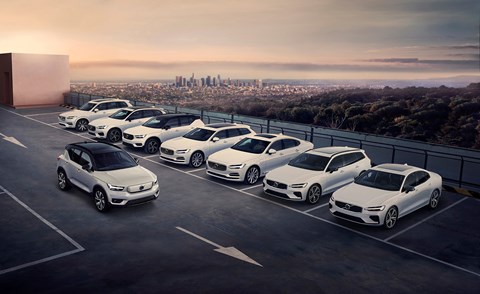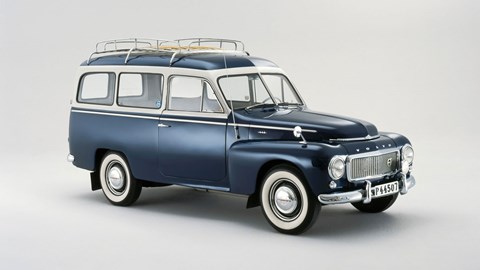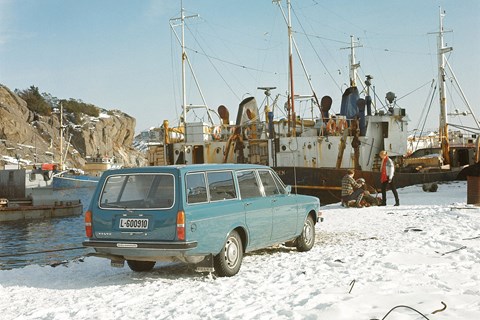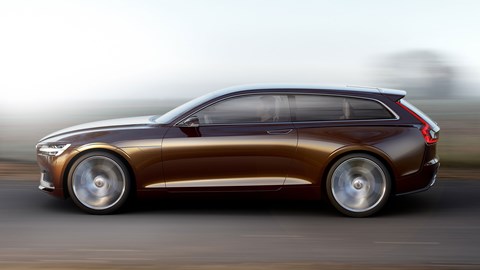► Volvo estates and saloons axed in UK
► Bodystyles dropped below 10% of sales
► It’s all SUVs from here on in
Volvo, the brand most synonymous with estate cars, is turning its back on the bodystyle, as it drops all wagon and saloon variants from its UK line-up.
It’s a sad day for fans of Swedish load-luggers, but sales data supports Volvo’s decision to axe niche bodystyles in the face of soaring interest in SUVs. Volvo UK says that fewer than 10% of customers were choosing an estate or saloon in the 60 and 90 ranges, forcing it to withdraw the models from UK price lists.
You can no longer factory-order a new one, but there are around 10 weeks’ of supply in the network, CAR understands. Interestingly, the Special Vehicles team will continue providing V60, V90 and S90 models to British emergency services with low-spec, high-power models.
‘We will naturally need to evolve and consolidate our line-up as we prioritise fully electric cars and make this technological transition,’ a UK spokesman told CAR. ‘As a result, we have removed further models from the UK line-up. These include the S60, V60 and V90. Appetite for our saloon and estate models has fallen to very low levels in the UK, which has led to our decision to remove these models from sale in the UK.’

Cue much huffing and puffing by the commentariat; but the reality is that manufacturers cannot trade on sentiment and we’re seeing brands from Renault to Audi dramatically reshape their line-ups. For every enthusiast who raves about the boxy practicality of a lower-slung wagon or notchback saloon, there are nine everyday motorists who prefer an XC-badged SUV.
So are estate cars just another victim of the transformation sweeping our industry? It seems so. Time then to note the import of the boxy Volvo family car over the years…
Volvo estates: the symbol of stout middle-class family values
Rarely has a brand garnered a reputation for a single bodystyle as much as Volvo. A Swedish estate car became TV scriptwriter shorthand for sensible family values. When casting the wheels for Margo and Jerry in 1970s sitcom The Good Life, there was only one choice of estate car… the achingly sensible 145.

It all began with the 1953 Volvo PV445 Duett (above), the godfather of the Volvo wagon. It set the template – boxy rear end, slab sides, official-fit roofracks – that spawned a generation of highly practical, sturdy and attainable family transport.
The 1960s ushered in the P220 Amazon, which dispatched earlier commercial vehicle underpinnings for more road-biased hardware. You can almost chart each decade with a new, boxy Volvo estate – from the 145 in the 1970s to the 1980s’ 240 and larger 740/940 ranges, and eventually the five-cylinder 850 model in the 1990s and the V70s in the Noughties.
From the set-square box to sleeker lifestyle Volvo estates
Volvo’s skill was to bolster the estate car’s loadbay with perpendicular rear ends to maximise loadspace, somehow working visually without feeling like driving a cardboard box on wheels.

Innovations such as headlight washers and door handles that could be used while wearing winter gloves imparted a feeling of Arctic hardiness and Volvo was a pioneer of third-row seating as early as the 1970s. If these versatile wagons could survive a Swedish winter, they’d ace life in Shropshire.
Sportier GLT versions with turbos and, eventually, BTCC touring car ambitions with the speedy 850 R added a further gloss, proving that performance and practicality were not mutually exclusive bedfellows. Volvo’s portfolio management of its wagons was a masterclass in how to maintain a range of cars to fill every which niche, and the pioneering XC and Cross Country models foreshadowed today’s trend for crossovers – the fusion cuisine of the automotive firmament.
This era represented peak Volvo estate car cool. Eventually, the boxiness of 1980s and ’90s Volvo wagons gave way to a sleeker aesthetic in the Noughties, as V40s and V60s softened the chiselled lines in an exceptional aesthetic overhaul masterminded by the late, great design chief Peter Horbury.
He recognised that desirability would become as important as outright load lugging. The clues were there as early as 2003, with the broad-shouldered Versatility Concept Car (VCC) and, eventually, Volvo served up the Volvo Concept Estate in 2014 (below) which set the template for modern Volvo.

It ushered in a whole new type of modern wagon, oozing premium feel even it was a tad less practical owing to its swept-back tail. It was, essentially, a two-door shooting brake version of what became the Volvo V90.
Volvo V60 and V90: a sleeker kind of estate car
A new breed of Volvo estate was born: large wagons adopted more shapely, aero-style rumps. The perpendicular rear ends of yore angled back a little to help the drag coefficient and style, while still leaving space for the dogs, wellies and detritus of family life.
CAR was a fan of the the latest, newly euthanised models and applauded their roominess, lovely Scandi interiors and their alt-take on family motoring. For anyone who decried the high-rise SUV fashion, a good family estate car was a fine alternative. Sadly, that tribe now has less choice on their shopping list.
Here’s hoping the future Volvo roadmap will see a return to the estate car, albeit electrified. As someone who grew up in the rear-facing seat of a 245 DL, I for one pine for the Volvo estate car to be reinstated.
Browse all our Volvo reviews